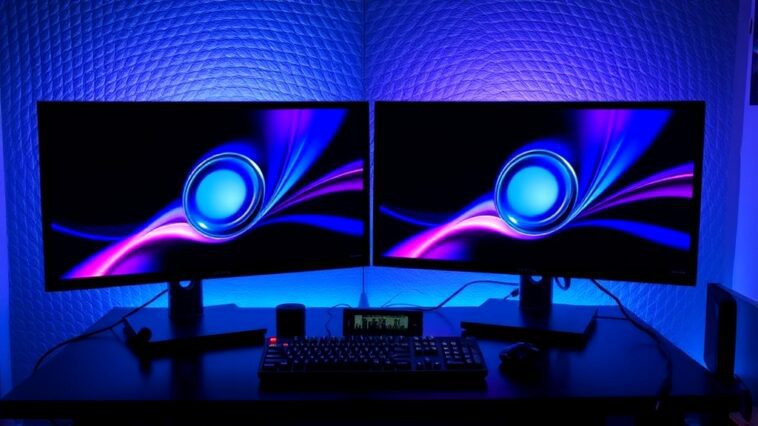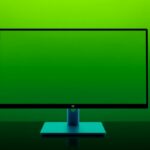Connecting studio monitors to PC can significantly enhance your audio experience, especially if you’re into music production or simply enjoy high-quality sound. Whether you’re a seasoned producer or just starting, knowing how to set up your monitors correctly is crucial. Here’s a step-by-step guide that will help you connect your studio monitors seamlessly, troubleshoot any issues, and optimize your audio performance.
Understanding Studio Monitors
Before diving into the connection process, let’s clarify what studio monitors are. Unlike regular speakers, studio monitors are designed to offer a flat frequency response, ensuring that what you hear is true to the original sound. This feature makes them ideal for recording and mixing music.
Why Connect Studio Monitors to Your PC?
You might be wondering why you should invest in studio monitors. Here are a few compelling reasons:
- Accurate Sound Representation: Studio monitors deliver sound as it is recorded, allowing you to make better mixing decisions.
- Improved Listening Experience: If you enjoy listening to music, monitors provide clarity and depth that regular speakers often lack.
- Versatility: They can be used for various applications, from gaming to video production.
Step-by-Step Guide on Connecting Studio Monitors to PC
Step 1: Gather Your Equipment
Before you start, ensure you have all the necessary equipment:
- Studio Monitors: Active monitors have built-in amplifiers, while passive monitors require an external amplifier.
- Cables: Depending on your monitors and PC, you may need TRS, XLR, or RCA cables.
- Audio Interface (Optional): While you can connect directly to your PC, an audio interface can improve sound quality and provide more connectivity options.
Step 2: Identify Your Connection Type
Connecting Active Studio Monitors
- Direct Connection to PC: If your monitors have TRS or RCA inputs, you can connect them directly to your PC’s audio output.
- Using an Audio Interface: This is the best way to connect studio monitors to PC via audio interface. An audio interface helps improve sound quality and offers better connectivity options.
Connecting Passive Studio Monitors
- Using an Amplifier: Connect your monitors to an amplifier, then connect the amplifier to your PC’s audio output.
- Audio Interface Option: Similar to active monitors, using an audio interface will yield better results.
Step 3: Make the Connections
- Turn Off All Devices: To avoid any electrical issues, ensure everything is powered off.
- Connect Cables:
- For TRS connections, plug one end into the monitor and the other into the audio output or interface.
- For RCA connections, follow the same process, ensuring you match the colors.
- If using XLR cables, plug them into the appropriate ports.
- Power On: Once everything is connected, turn on your monitors and PC.
Step 4: Configure Audio Settings on Your PC
- Open Sound Settings: Right-click the speaker icon in the taskbar and select ‘Sounds’.
- Set Output Device: Under the Playback tab, find your monitors or audio interface and set them as the default device.
- Adjust Levels: Make sure the volume is turned up both on your monitors and within your PC’s audio settings.
Connecting Studio Monitors to PC Without an Audio Interface
If you don’t have an audio interface, you can still connect your studio monitors directly to your PC. Here’s how:
- Use TRS or RCA Cables: Connect the monitors directly to your computer’s audio output.
- Set Up in Sound Settings: Follow the same audio settings configuration as mentioned earlier.
- Adjust Volumes: Ensure the volumes are balanced to prevent distortion.
While this method works, keep in mind that using an audio interface can provide better sound fidelity and more control over your audio.
Troubleshooting Studio Monitor Connection Issues with PC
Even with the best setups, connection issues can arise. Here’s how to troubleshoot:
- Check Connections: Ensure all cables are securely connected. Loose connections can lead to audio dropouts.
- Inspect Cables: Damaged cables can cause sound issues. Try using different cables if possible.
- Test with Another Device: Connect your monitors to a different device to ensure they are functioning correctly.
- Check PC Audio Settings: Sometimes, the issue may lie within the audio settings. Make sure the correct output device is selected.
How to Set Up Studio Monitors with a Laptop and PC
Setting up studio monitors with a laptop is quite similar to connecting them to a PC. Here’s a quick guide:
- Identify Audio Output: Check if your laptop has a headphone jack or USB ports available.
- Connect: Use appropriate cables to connect your monitors directly or via an audio interface.
- Adjust Settings: Follow the same steps to configure your audio settings on your laptop.
Connecting Active Studio Monitors to PC Explained
Active studio monitors are generally easier to set up since they have built-in amplifiers.
- Connect Using TRS or RCA Cables: Simply plug them into your PC’s audio output.
- Adjust Volume: Make sure to balance the volume levels on both the monitors and your PC.
With active monitors, you’ll find that they often come with additional features such as EQ controls, allowing for further sound customization.
How to Connect Studio Monitors to PC Using USB Cables
Some modern studio monitors offer USB connectivity. Here’s how to connect:
- Use USB Cable: Connect the USB cable from your monitor to your computer.
- Install Drivers: Some monitors may require specific drivers. Check the manufacturer’s website for any necessary downloads.
- Set as Default Device: As with other connections, make sure to set your monitor as the default playback device in your sound settings.
Best Cables for Connecting Studio Monitors to PC
Choosing the right cables is crucial for optimal sound quality. Here are some options:
- TRS Cables: Balanced cables that reduce noise and interference.
- XLR Cables: Ideal for professional setups and provide excellent sound quality.
- RCA Cables: Best for simple connections but can be susceptible to interference.
Selecting the Right Cable
When selecting cables, consider the distance between your monitors and your PC. Longer runs may require higher quality cables to maintain sound integrity.
How to Optimize Studio Monitor Setup for PC Audio Performance
To get the most out of your studio monitors, consider these optimization tips:
- Positioning: Place your monitors at ear level and form an equilateral triangle with your listening position.
- Room Treatment: Use acoustic panels to reduce reflections and improve sound quality.
- Volume Levels: Keep your monitor volume at a moderate level to avoid distortion and ear fatigue.
- Regular Calibration: Occasionally recalibrate your audio settings to adapt to any changes in your environment.
Conclusion
Connecting studio monitors to PC can seem daunting, but with the right approach, it’s a straightforward process that enhances your audio experience. Whether you’re producing music, mixing, or simply enjoying high-quality sound, knowing how to set up your monitors correctly is key. By following this guide, you’re now equipped to tackle any connection method, troubleshoot issues, and optimize your audio performance. Enjoy the clear, precise sound that studio monitors bring to your audio projects!
Top 10 FAQs About Connecting Studio Monitors to Your PC
1. What are studio monitors, and why do I need them?
Studio monitors are high-quality speakers designed for accurate sound reproduction. Unlike regular speakers, they provide a flat frequency response, making them ideal for mixing and mastering music. If you’re serious about audio production, you’ll love how studio monitors help you hear every detail in your mix.
2. What cables do I need to connect studio monitors to my PC?
To connect studio monitors to your PC, you usually need either XLR or TRS cables. If your monitors have RCA inputs, you can also use RCA cables. Make sure to check the outputs on your audio interface or computer for compatibility. Having the right cables is crucial for optimal sound quality.
3. Can I connect studio monitors directly to my computer?
Yes, you can connect studio monitors directly to your computer, but it’s often better to use an audio interface. This device improves sound quality and provides better control over your audio output. Think of it as an upgrade that makes a noticeable difference in your listening experience.
4. How do I set up the audio interface?
Setting up an audio interface is straightforward. First, connect it to your PC via USB. Next, plug your studio monitors into the interface using the appropriate cables. Finally, install any necessary drivers and adjust the settings in your computer’s audio preferences. It’s like setting up a new gadget—just follow the instructions, and you’ll be good to go.
5. Should I use a subwoofer with my studio monitors?
Using a subwoofer can enhance your sound experience, especially if you’re producing bass-heavy music. However, it’s not mandatory. If your studio monitors produce sufficient low-end frequencies, you might not need one. It really depends on your specific audio needs and preferences.
6. How should I position my studio monitors for the best sound?
Position your studio monitors at ear level, forming an equilateral triangle with your listening position. Avoid placing them too close to walls, as this can create unwanted bass buildup. Think of it like creating a cozy listening nook—proper positioning makes all the difference!
7. Do I need to adjust my computer settings after connecting the monitors?
Yes, you’ll likely need to adjust your sound settings. Go to your computer’s audio settings and select your audio interface as the main output device. You may also want to check the volume levels to prevent distortion. This step ensures everything is running smoothly.
8. What should I do if I hear distortion in the sound?
If you hear distortion, check the volume levels on both your PC and studio monitors. Ensure they are not set too high. Also, look for any cable issues—damaged or poor-quality cables can cause problems. In my experience, keeping your levels balanced solves most distortion issues.
9. Can I use studio monitors for gaming or casual listening?
Absolutely! While studio monitors are designed for professional audio work, they can also enhance your gaming and casual listening experiences. You’ll appreciate the clarity and detail they bring to your favorite games and music. It’s a win-win situation!
10. How can I improve the acoustics of my room for better sound?
To improve your room’s acoustics, consider adding acoustic panels or foam to absorb sound reflections. Avoid placing hard surfaces directly across from your monitors, as they can create echoes. Think about it like decorating your space for a cozy vibe—small changes can make your listening experience much better.
By following these tips, you’ll be well on your way to enjoying high-quality sound from your studio monitors and enhancing your overall audio experience!




